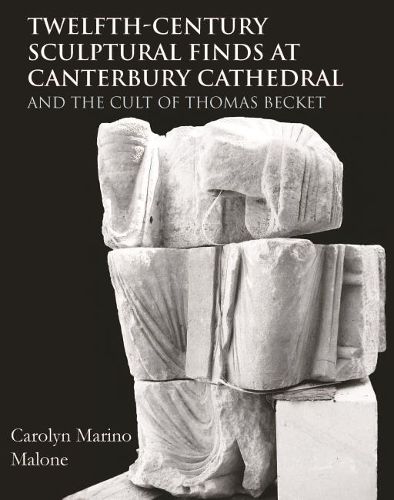Readings Newsletter
Become a Readings Member to make your shopping experience even easier.
Sign in or sign up for free!
You’re not far away from qualifying for FREE standard shipping within Australia
You’ve qualified for FREE standard shipping within Australia
The cart is loading…






This study reconstructs twelfth-century sculptural and architectural finds, found during the restoration of the Perpendicular Great Cloister of Christ Church, Canterbury, as architectural screens constructed around 1173. It proposes that the screens provided monastic privacy and controlled pilgrimage to the Altar of the Sword’s Point in the Matrydom, the site of Archbishop Thomas Becket’s murder in 1170. Excavations in the 1990s discovered evidence of a twelfth-century tunnel leading to the Matyrdom under the crossing of the western transept. Constuction would have required rebuilding the crossing stairs and the screens flanking the crossing. The roundels, portraying lions, devils, a ‘pagan’, Jews, and a personification of the synagogue, are reconstucted on the south side of the crossing as a screening wall framing the entrance to this tunnel. The quatrefoils with images of Old Testament prophets are reconstructed as a rood screen on the west side of the crossing. In the Matyrdom, a screen, is proposed with, perhaps, the earliest known sculptural representation of Thomas Becket. The rood screen, located behind the Altar of the Holy Cross, would have provided a visual focus during Mass, monastic processions, and sermons, especially during Christmas and Holy Week. The row of prophets, pointing upwards at the Rood, would have functioned as the visual equivalent of the dialogue of the ‘Ordo prophetarum’ that predicted the Messiah as proof to Jews and other unbelievers of Christian redemption. The roundels, just around the corner on the south screening wall, can be interpreted as representing the unbelieving Other and forces of evil warning pilgrims to seek penance at the altar of the newly canonised St Thomas. In addition to this new interpretation, a catalogue raisonne and an account of the discovery of the finds offers material for future research that has been unavailable to previous studies. All the finds were photographed by the author as the restoration progressed and 16 pieces have since been lost, making some of the unpublished photographs essential evidence of the archaeological record.
$9.00 standard shipping within Australia
FREE standard shipping within Australia for orders over $100.00
Express & International shipping calculated at checkout
This study reconstructs twelfth-century sculptural and architectural finds, found during the restoration of the Perpendicular Great Cloister of Christ Church, Canterbury, as architectural screens constructed around 1173. It proposes that the screens provided monastic privacy and controlled pilgrimage to the Altar of the Sword’s Point in the Matrydom, the site of Archbishop Thomas Becket’s murder in 1170. Excavations in the 1990s discovered evidence of a twelfth-century tunnel leading to the Matyrdom under the crossing of the western transept. Constuction would have required rebuilding the crossing stairs and the screens flanking the crossing. The roundels, portraying lions, devils, a ‘pagan’, Jews, and a personification of the synagogue, are reconstucted on the south side of the crossing as a screening wall framing the entrance to this tunnel. The quatrefoils with images of Old Testament prophets are reconstructed as a rood screen on the west side of the crossing. In the Matyrdom, a screen, is proposed with, perhaps, the earliest known sculptural representation of Thomas Becket. The rood screen, located behind the Altar of the Holy Cross, would have provided a visual focus during Mass, monastic processions, and sermons, especially during Christmas and Holy Week. The row of prophets, pointing upwards at the Rood, would have functioned as the visual equivalent of the dialogue of the ‘Ordo prophetarum’ that predicted the Messiah as proof to Jews and other unbelievers of Christian redemption. The roundels, just around the corner on the south screening wall, can be interpreted as representing the unbelieving Other and forces of evil warning pilgrims to seek penance at the altar of the newly canonised St Thomas. In addition to this new interpretation, a catalogue raisonne and an account of the discovery of the finds offers material for future research that has been unavailable to previous studies. All the finds were photographed by the author as the restoration progressed and 16 pieces have since been lost, making some of the unpublished photographs essential evidence of the archaeological record.